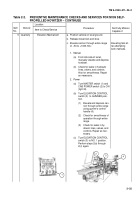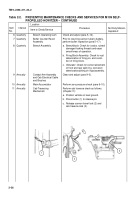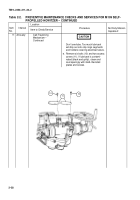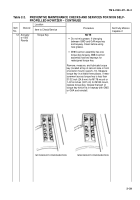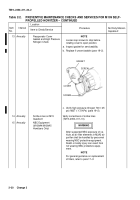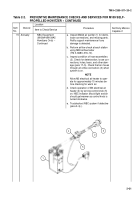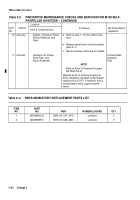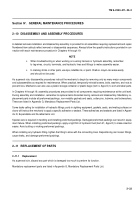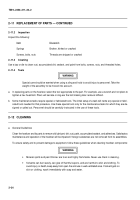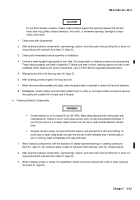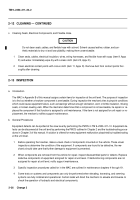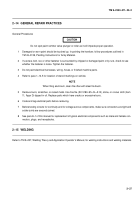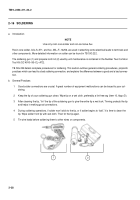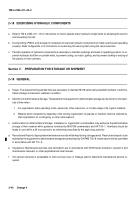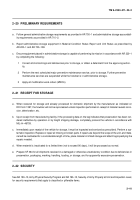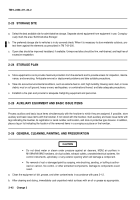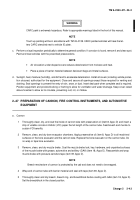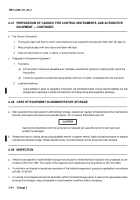TM-9-2350-311-20-2 - Page 96 of 828
TM 9–2350–311–20–2
Change 2
2–35
CAUTION
Do not direct stream of water or steam under pressure against the opening between the hull and
turret (race ring), grilles, exhaust deflectors, fire control, or armament openings. Damage to compo-
nents could result.
1
Clean parts after disassembly.
2
After cleaning hydraulic components, coat bearings, pistons, and other parts having sliding fits or close run-
ning surfaces with hydraulic fluid (item 21, Appx D).
3
Clean parts immediately before assembly or installation.
4
Choose a cleaning agent appropriate to your task. Use soapy water or cleaning compound as appropriate.
These cleaning agents are listed in Appendix D. Make sure area in which cleaning agents are used is well-
ventilated. When cleaning fire control instruments, refer to TM 9–254 for expendable/durable items.
5
Wipe parts dry with a lint-free rag (item 25, Appx D).
6
After cleaning, protect all parts from dust and dirt.
7
When removing rubber gaskets and seals, clean the gasket seat or seal seat to remove dirt and old adhesive.
8
Nameplates, caution plates, and instruction plates found in a dirty or corroded condition should be cleaned
thoroughly and coated with a heavy coat of lacquer.
b.
Cleaning Hydraulic Components
WARNING
•
Compressed air is not to exceed 30 psi (207 kPa). Wear safety glasses when drying parts with
compressed air. Failure to do so could cause serious injury to eyes and possible blindness. If
you hurt your eyes or if a foreign object is blown into your eyes, seek medical attention immedi-
ately.
•
Solvents can burn easily, can give off harmful vapors, and are harmful to skin and clothing. To
avoid injury or death, keep away from open fire and use in well-ventilated area. If solvent gets on
skin or clothing, wash immediately with soap and water.
1
Wash hydraulic components, with the exception of sealed-type ball bearings, in cleaning compound
(item 9.1, Appx D). Dry hydraulic parts, except for base and roller bearings, with dry, compressed air.
2
After cleaning hydraulic components, coat bearings, pistons, and other parts having sliding fits or close run-
ning surfaces with hydraulic fluid (item 21, Appx D).
3
When installing screws or valves, the assembler’s hands should be covered with a film of clean hydraulic
fluid (item 21, Appx D).
Back to Top

